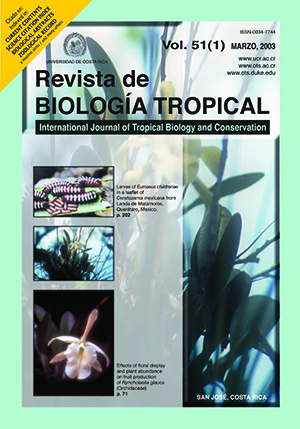Abstract
We visited 51 lakes in Costa Rica as part of a broad-based survey to document their physical and chemical characteristics and how these relate to the mode of formation and geographical distribution of the lakes. The four oxbow lakes were low in elevation and tended to be turbid, high in conductivity and CO2, but low in dissolved O2; one of these, L. Gandoca, had a hypolimnion essentially composed of sea water. These were similar to the four wetland lakes, but the latter instead had low conductivities and pH, and turbidity was often due to tannins rather than suspended sediments. The thirteen artificial lakes formed a very heterogenous group, whose features varied depending on local factors. The thirteen lakes dammed by landslides, lava flows, or lahars occurred in areas with steep slopes, and were more likely to be stratified than most other types of lakes. The eight lakes that occupy volcanic craters tended to be deep, stratified, clear, and cool; two of these, L. Hule and L. Río Cuarto, appeared to be oligomictic (tending toward meromictic). The nine glacial lakes, all located above 3440 m elevation near Cerro Chirripó, were clear, cold, dilute, and are probably polymictic. Cluster analysis resulted in three significant groups of lakes. Cluster 1 included four calcium-rich lakes (average 48 mg l-1), Cluster 2 included fourteen lakes with more Si than Ca+2 and higher Cl- than the other clusters, and Cluster 3 included the remaining thirty-three lakes that were generally less concentrated. Each cluster included lakes of various origins located in different geographical regions; these data indicate that, apart from the high-altitude glacial lakes and lakes in the Miravalles area, similarity in lake chemistry is independent of lake distribution.

This work is licensed under a Creative Commons Attribution 4.0 International License.
Copyright (c) 2003 Revista de Biología Tropical
Downloads
Download data is not yet available.

